
ORP Błyskawica (Lightning) is a Grom-class destroyer which served in the Polish Navy during World War II. It is the only Polish Navy ship to have been decorated with the Virtuti Militari, Poland's highest military order for gallantry, and in 2012 was given the Pro Memoria Medal. Błyskawica is preserved as a museum ship in Gdynia and is the oldest preserved destroyer in the world. Błyskawica is moored next to the Dar Pomorza.

ORP Grom was the lead ship of her class of destroyers serving in the Polish Navy during World War II. She was named after the Polish word for Thunderbolt, while her sister ship ORP Błyskawica translates to lightning.

ORP Gryf was a large Polish Navy minelayer, sunk during the 1939 German invasion of Poland. She was one of two large Polish ships that were not evacuated to Great Britain during Operation Peking prior to the outbreak of the Polish Defensive War. She was sunk in Hel harbour on 3 September 1939 during the opening stage of World War II.
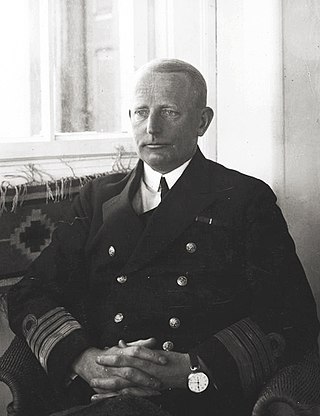
Józef Unrug was a Polish admiral who helped establish Poland's navy after World War I. During the opening stages of World War II, he served as the Polish Navy's commander-in-chief. As a German POW, he refused all German offers to change sides and was incarcerated in several Oflags, including Colditz Castle. He stayed in exile after the war in the United Kingdom, Morocco and France where he died and was buried. In September 2018 he was posthumously promoted in the rank of Admiral of the fleet by the President of Poland. After 45 years his remains, along with those of his wife Zofia, were exhumed from Montrésor and taken in October 2018 to his final resting place in Gdynia, Poland.
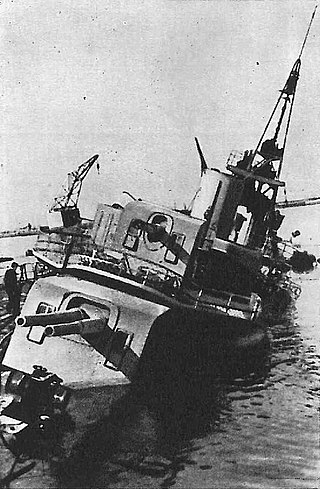
The Battle of Danzig Bay took place on 1 September 1939, at the beginning of the invasion of Poland, when Polish Navy warships were attacked by German Luftwaffe aircraft in Gdańsk Bay. It was the first naval-air battle of World War II.
This article details the order of battle of the Polish Navy prior to the outbreak of World War II and the Polish Defensive War of 1939. Following World War I, Poland's shoreline was relatively short and included no major seaports. In the 1920s and 1930s, such ports were built in Gdynia and Hel, and the Polish Navy underwent a modernisation program under the leadership of Counter-Admiral Józef Unrug and Vice-Admiral Jerzy Świrski. Ships were acquired from France, the Netherlands, and the United Kingdom, and the navy was to be able to secure the Polish supply lines in case of a war against the Soviet Union. By September 1939 the Polish Navy consisted of 5 submarines, 4 destroyers, and various support vessels and mine-warfare ships.
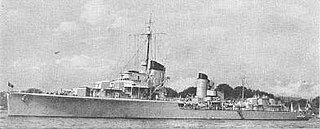
The German destroyer Z1 Leberecht Maass was the lead ship of her class of four destroyers built for the German Navy during the mid-1930s. Completed in 1937, two years before the start of World War II, the ship served as a flagship and spent most of her time training, although she did participate in the occupation of Memel in early 1939.

ORP Sęp was an Orzeł-class submarine serving in the Polish Navy during World War II. In Polish her name means Vulture.

The Peking Plan was an operation in which three destroyers of the Polish Navy, the Burza, Błyskawica, and Grom, were evacuated to the United Kingdom in late August and early September 1939. They were ordered to travel to British ports and assist the British Royal Navy in the event of a war with Nazi Germany. The plan was successful and allowed the ships to avoid certain destruction or capture in the German invasion.

The Wicher-class destroyers were a series of destroyers that served in the Polish Navy during World War II. Two ships of this class were built for the Second Polish Republic by Chantiers Navals Français during the late 1920s. They were modified versions of the Bourrasque-class destroyers built for the French Navy.

Battle of Gdynia was one of the major battles in northern Poland during the Invasion of Poland of 1939. The Germans' main push towards Gdynia began on 8 September and they captured Gdynia six days later on 14 September.

The Battle of Hel was a World War II engagement fought from 1 September to 2 October 1939 on the Hel Peninsula, of the Baltic Sea coast, between invading German forces and defending Polish units during the German invasion of Poland. The defense of the Hel Peninsula took place around the Hel Fortified Area, a system of Polish fortifications that had been constructed in the 1930s near the interwar border with the German Third Reich.
Viktor Lomidze, also known by his Polish name of Wiktor Łomidze-Wachtang, was a Georgian-Polish military officer. After the Bolshevik take-over of his country in early 1920s he emigrated to Poland, where he joined the Polish Army and then the Polish Navy.
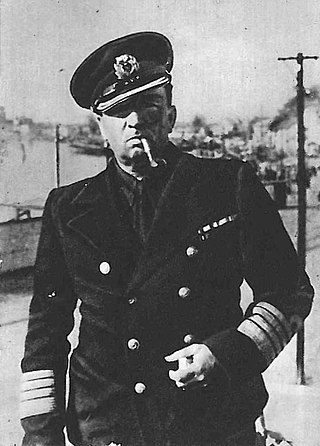
Kontradmirał Włodzimierz Steyer was a Polish naval officer before and during the Second World War. During the Invasion of Poland in 1939 he commanded the Polish land forces defending the Hel Peninsula in what became known as the Battle of Hel, the longest-lasting battle of the campaign. After the war he briefly served as the commanding officer of the entire Polish Navy. Steyer was also an author of novels under the pen-name "Brunon Dzimicz".
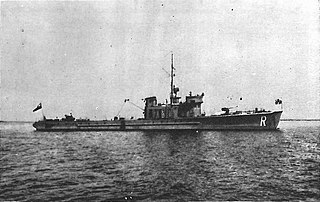
ORP Rybitwa was a Jaskółka-class minesweeper of the Polish Navy at the outset of World War II. Rybitwa participated in the defence of Poland during the Nazi German invasion of 1939. The ship was damaged by a German bomb on 14 September 1939. The ship was later captured by the Germans, but returned to serve under the Polish flag after the War.

The Polish Navy is the naval branch of the Polish Armed Forces. The Polish Navy consists of 46 ships and about 12,000 commissioned and enlisted personnel. The traditional ship prefix in the Polish Navy is ORP.

The Danzig crisis of 1932 was an incident between the Free City of Danzig and Poland concerning whether the Polish government had the right to station warships in Danzig harbour, together with Poland's claim to represent Danzig with foreign powers. The incident was sparked on 14 June 1932 when a squadron of British destroyers visited Danzig and was greeted by the Polish destroyer Wicher which had entered Danzig harbour without the permission of the Senate of the Free City. The incident led to the Danzig authorities reluctantly ceding the right of Poland to station its warships in Danzig, the renewal of the agreement governing Polish rights in the Free City and within Poland a shift towards navalism.
Tadeusz Józef Roman Morgenstern-Podjazd was a Polish naval officer who was one of the founders of the Navy of the Polish Second Republic and who served as the deputy commander of the Navy between September 1941 and October 1942.

Stefan Kwiatkowski was a Polish commander of the Polish–Soviet War and a recipient of the Silver Cross of the Virtuti Militari. He was known for being killed on the first day of World War II during the Battle of Danzig Bay while commanding the ORP Gryf.


















